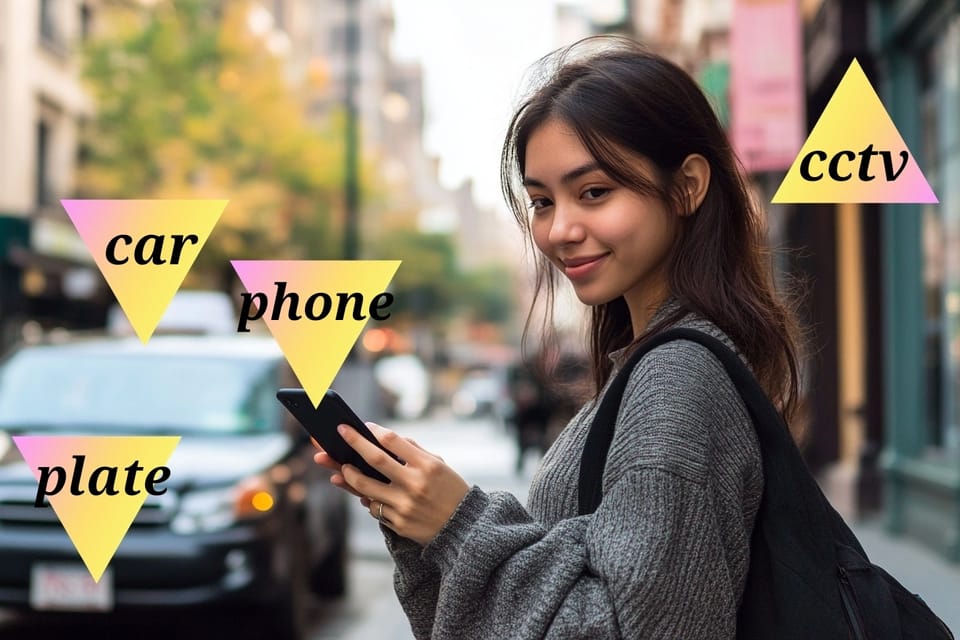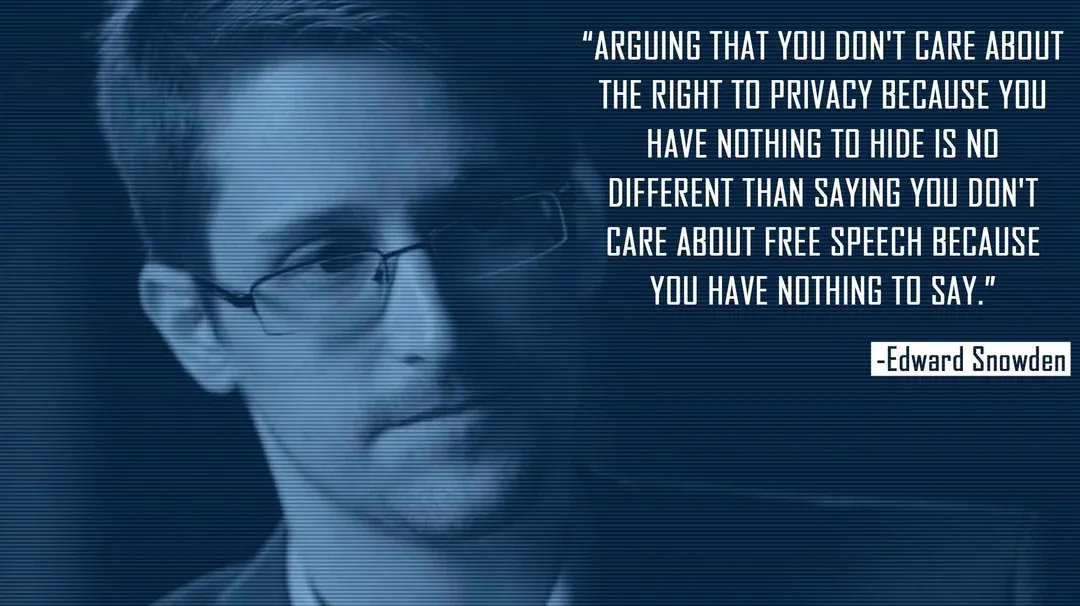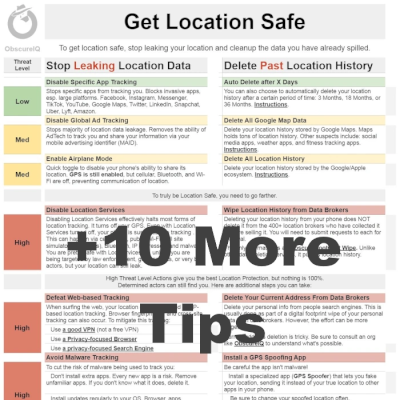Ghosting the Grid

How to Vanish with Offline Maps and Other Privacy Tactics
The world is watching. Every click, every swipe, every GPS ping – it's all being recorded, analyzed, and monetized.
- $12B: It's estimated that the location data industry alone is worth upwards of $12 billion, with companies tracking the movements of billions of people worldwide.
- 4 pts = 95%: Researchers have shown that just four location-time data points are enough to identify 95% of individuals. (You devices track you hundreds even thousands of times a day!)
But what if you want to slip off the grid? What if you have a destination that needs to stay off the record? Forget leaving breadcrumbs – we're talking about leaving no trace.
Unlike typical online mapping services, offline maps do not require constant data connection, meaning they aren't constantly sending your location data back to servers. This drastically reduces the amount of personal data collected, and ensures that your movements remain private. Instructions below tell you exactly how to employ offline maps to ghost the grid.
Online mapping services like Google Maps and Apple Maps, on the other hand, continuously gather detailed information about your locations, routes, and preferences, which can be monetized or even subpoenaed.

Why should you be careful visiting sensitive POIs? Your location history is vulnerable.
- Strava Fitness App 'Gives Away EXACT Location of Biden, Trump and Other World Leaders' in Major Global Security Blunder
- The Sun, 29 Oct 2024 - Catholic Group Spent Millions on App Data that Tracked Gay Priests
- WaPo, 09 Mar 2023 - Location Data Tracks Abortion Clinic Visits. Here’s What to Know
- EFF, 15 Mar 2024 - Jeffrey Epstein’s Island Visitors Exposed by Data Broker
- Wired, 28 Mar 2024 - The Global Surveillance Free-for-All in Mobile Ad Data
- Krebs, Oct 2024
Even the rich and famous can be surveilled.
As more and more consumers become aware of the privacy risks associated with location tracking, regulatory actions are beginning to address the ways in which data brokers misuse sensitive information. The Federal Trade Commission (FTC) has taken a series of decisive actions against some of the most egregious offenders in the location data industry, highlighting the critical need for consumer protection and privacy.

FTC Actions Against Location Data Brokers
The Federal Trade Commission (FTC) has recently slammed four location data brokers for unlawfully selling sensitive data and tracking individuals to sensitive sites.
These actions matter. Such data can be used to track visits to places of worship, medical facilities, or even personal activities, putting individuals at risk of privacy violations and targeted exploitation.
By holding data brokers accountable, the FTC is taking a stand to ensure that your movements aren't used against you or sold to the highest bidder. These decisions underscore the growing scrutiny on data brokers and their practices.
- Gravy Analytics and Venntel
Unlawfully selling location data that tracked consumers to sensitive locations, including places of worship and medical facilities.
FTC filing - Mobilewalla
Collecting and selling sensitive location data, including data gathered through Real Time Bidding (RTB). RTB can leak individuals' location information and allow detailed profiling.
FTC filing - InMarket
Prohibited from selling or sharing precise location data.
FTC filing - X-Mode and Successor Outlogic
Prohibited from sharing or selling sensitive location data.
FTC filing

Ditch the Digital Trail: Mastering Offline Maps

|
Plan Route, Load Map |
Arrive at the Decoy Location |
Go Dark, Airplane Mode |
Arrive Undetected, Avoid CCTV |
Think of offline maps as your secret weapon. Download your route in advance, and you're free from the prying eyes of data-hungry apps and Wi-Fi sniffers. Here's the playbook:
- Pre-Game Your Route: Scope out your destination and download the map before you leave. Include the surrounding area – you'll need some wiggle room for the next step.
- Go Dark: As you approach your decoy, activate airplane mode or disable data. Now it's just you and your downloaded map, navigating under the radar.
- Fade to Black: Reach your destination undetected. No GPS history, no location data to leak or sell. You've officially ghosted the grid.

Beyond Offline Maps: Advanced Stealth Tactics
Offline maps are just the beginning. To truly disappear, you need a multi-layered approach:
- Radio Silence: Disable Bluetooth and Wi-Fi. Your phone is constantly scanning for signals, creating a trail of location data. Shut it down.
- Location Lockdown: Only use location services when absolutely necessary. Treat it like a compass, not a constant tracker.
- The Art of Unpredictability: Vary your routes and travel times. Don't establish patterns that algorithms can easily identify.
- Data Hygiene: Regularly purge your location history and app data. Leave no digital footprints.
- Privacy-First Navigation: Explore alternative map apps like Organic Maps that prioritize privacy and avoid tracking your movements. OsmAnd is another excellent option, offering offline maps, multiple navigation modes, and granular privacy controls. For those who prefer a more familiar interface, Magic Earth provides a Google Maps-like experience without the tracking.
- Last-Mile Lockdown: Activate airplane mode as you near your destination for an extra layer of security.
| Icon | Description | Key Features & Privacy Focus |

|
Organic Maps: Privacy-focused, offline maps designed to be used by travelers, hikers, and cyclists. No tracking, no data collection, no ads. Uses OpenStreetMap data with detailed trails, terrain features, and points of interest. Free and open-source. |
Key Features: Offline maps, OpenStreetMap data, no ads
Privacy Focus: No tracking or data collection
|

|
OsmAnd: Highly detailed, customizable, and open-source. Great for hiking and biking with lots of map types (contour lines, etc.). |
Key Features: Highly customizable, offline maps
Privacy Focus: Open-source, privacy-respecting
|

|
Magic Earth: A good option if you prefer a more user-friendly interface similar to Google Maps, but without the tracking. |
Key Features: Google Maps-like UI, offline navigation
Privacy Focus: No tracking, privacy-oriented Android version is not safe - may share Location and Device IDs.
|

How Location Data Can Be Gathered: It's not just your phone
- Cell phone: The person in the photo is holding a smartphone. Smartphones can be tracked using GPS, Wi-Fi triangulation, and cell tower data.
- Vehicle: The car in the photo undoubtedly has tracking built in. New cars have the equivalent of two cell phones embedded and sending telemetrics and your location back to the manufacturer. Some new cars require you to have GPS services enabled. They are all tracking you in one way or another.
- License plate: The car in the photo has a visible license plate. License plates can be scanned by automated license plate readers (ALPRS) and used to track the car's movements. ALPR tech has been rolled out all over the country. Tens of thousands of stationary and mobile readers are scanning for your plate.
- CCTV camera: The CCTV camera mounted on the building can be used to record video footage of the scene. Facial recognition software can be used to identify people in the footage.

Why This Matters: Real-World Scenarios
She needed to meet a source without drawing attention, and traditional mapping apps posed a serious risk of exposing her location.
By using offline maps and following the stealth techniques outlined here, she was able to protect her source's identity and safely gather critical information.
The need for digital stealth isn't limited to spies and secret agents.
Consider these scenarios:
- Journalists: Investigating sensitive stories often requires meeting sources discreetly and protecting their identities.
- Activists: Organizing protests or documenting human rights abuses can put individuals at risk if their movements are tracked.
- Whistleblowers: Leaking confidential information necessitates extreme caution to avoid detection.
- Victims of stalking or harassment: Offline mapping and privacy measures can be vital for ensuring personal safety.
- Seeking discreet medical care: Individuals seeking treatment for sensitive health issues may wish to maintain their privacy.

The Ethics of Invisibility: Balancing Privacy and Security
According to privacy advocate Edward Snowden, 'Arguing that you don't care about the right to privacy because you have nothing to hide is no different than saying you don't care about free speech because you have nothing to say.'

This quote underscores the importance of privacy as a fundamental right that should be protected for everyone. But while privacy is very much fundamental right, it's important to acknowledge the potential for misuse of these data wiping and 'ghosting' techniques.
Law enforcement and security agencies rely on location data to investigate crimes and protect public safety. The challenge lies in finding a balance between individual privacy and societal security.
When a choice is presented, our default state cannot be mass surveillance.
Akin to the sentiments of Jurist Blackstone, it would be better to shroud ten cybercriminals than let one innocent suffer in publicity."
- Jeff Jockisch, 2024

Counter-Surveillance: Beyond the Digital Domain
True operational security requires awareness of physical surveillance as well. Here are some practical tips to recognize and counteract physical tracking effectively:
- 🚗 Be Aware of Tailing Vehicles: Regularly check your rearview mirror and vary your speed or routes to detect if you are being followed. Use roundabouts or make sudden turns to observe if any vehicle consistently follows you.
- 👀 Identify Surveillance Teams: Be attentive to individuals who appear to be observing you, taking photographs, or behaving unusually. Seeing the same person at different locations multiple times could indicate surveillance.
- 👨🏻 Use Disguises and Route Variation: Change your appearance slightly and vary your routes frequently. Avoid predictable patterns that surveillance teams could exploit.
- 📷 Minimize Surveillance Exposure:
- CCTV Cameras: Plan routes that minimize your exposure to surveillance cameras.
- Facial Recognition Technology: Use disguises or counter-surveillance techniques to avoid identification.

Here are the detailed step by step instructions for Ghosting the Grid.
[Wire subscribers and ObscureIQ clients]

Detailed Instructions
- ✏️ Mark Your Map in Advance: Find the area you’re headed to, and carve it out on your map app. Download it. Make sure the boundaries are wide enough to cover some extra ground. You’re going to need it when you go offline.
- Be sure to download extra area surrounding where you'll be in case you need to make a detour. You don't want to have to turn on your GPS just to find a gas station or a local store.
- 🦆 Choose a Nearby Decoy Location: Set your course to a place that’s near—but not quite—the spot you intend to reach. Someplace plain, like a park or a coffee joint that’ll seem like just another stop.
- Choose a location that fits your profile. Otherwise it could look fishy.
- 📵 Slip into Offline Mode: When you’re in sight of this decoy, switch to airplane mode or turn off your data. From here, it’s just you and the map you downloaded, a guide without witnesses.
- Go the last leg with no one watching, no adtech tracking your steps.
- Consider buying a Faraday bag and dropping your phone into it if you're going to bring it along to your final destination. This will ensure that no signal is tracking you.
- 🕶️ Finish Out of Sight: Your destination remains unseen, undocumented. The road behind you fades. The memory of where you’ve been has not been tracked by your phone.
- Be aware that you can be tracked in other ways.
- Your car’s location can be tracked separate from your phone.
- Your license plates can be tracked by stationary or mobile cameras via ALPR scanners.
- Your face can register on CCTV cameras. And the use of facial recognition everywhere is skyrocketing.
- If your phone's location services are not off completely, your location can be tracked outside of GPS via Bluetooth beacons
- Cell towers and Wi-Fi signals.
- Friends, coworkers, fans: someone who knows you could see you and post something. They may not be trying to invade your privacy, but that location data point could be revealing.
- Be aware that you can be tracked in other ways.

Safe Phone Mapping App Options

|
Organic Maps: Privacy-focused, offline maps designed to be used by travelers, hikers, and cyclists. No tracking, no data collection, no ads. Uses OpenStreetMap data with detailed trails, terrain features, and points of interest. Free and open-source. Apple App store: Free, 4.8 rating, Data Not Collected. Android App store: Free, 4.5 rating, No data collected. |

|
OsmAnd: Highly detailed, customizable, and open-source. Great for hiking and biking with lots of map types (contour lines, etc.). Apple App store: Free, 4.6 rating, Data Not Linked to You. Android App store: Free, 4.2 rating, No data shared with third parties. |

|
Magic Earth: A good option if you prefer a more user-friendly interface similar to Google Maps, but without the tracking. Apple App store: Free, 4.4 rating, Data Not Linked to You. Android App store: Free, 4.3 rating, This app may share these data types with third parties. Location and Device or other IDs |

Dedicated GPS Devices
- Garmin: The gold standard for outdoor and off-road navigation. Rugged, reliable, and packed with features. Many models allow you to download detailed maps.
- Other brands: Magellan, TomTom, and others offer varying degrees of offline functionality. Look for devices with expandable memory for storing maps.

Beyond Digital
- Paper Maps: Never underestimate the power of a good old-fashioned paper map! Reliable, no batteries required, and a great way to learn map reading skills. Paper maps are particularly useful in areas without any cellular service or when digital devices fail, such as during power outages or in remote locations with no signal.
- Compass and Protractor: For the truly adventurous, combine a compass with a topographic map and protractor to navigate using traditional orienteering techniques. Well, we don't recommend these for urban travel, It's not a bad idea to know how to orienteer if you plan on being off the grid.


If you're concerned about your location, privacy should be using a better map solution than Google or Apple Maps. Should also be replacing standard weather apps. They collect and sell your location to advertisers and data brokers. Our advice:
- Avoid Apps like: 🤢🤬
- The Weather Channel, AccuWeather, WeatherBug, Yahoo Weather, Weather Forecast, GO Weather, MyRadar
- We like paid versions of weather apps that promise not to share your data. Nothing is completely safe, but if you need weather these are good choice
You should also look at getting Location Safe. We offer two unique guides to help you get there.
- Be location safe with this detailed guide from ObscureIQ. It helps with all of your digital settings.

- Buying property with privacy. ObscureIQ has specific methods for purchasing property without alerting data brokers and other snoops.
Call us for advice.
In a world of ubiquitous surveillance, it's easy to feel powerless.
But by mastering these techniques, you can reclaim your digital privacy and move with confidence and autonomy. Remember, the ability to disappear is not about hiding from the law, but about protecting yourself from unwanted intrusion and asserting your right to move freely and anonymously in the digital age.
Member discussion